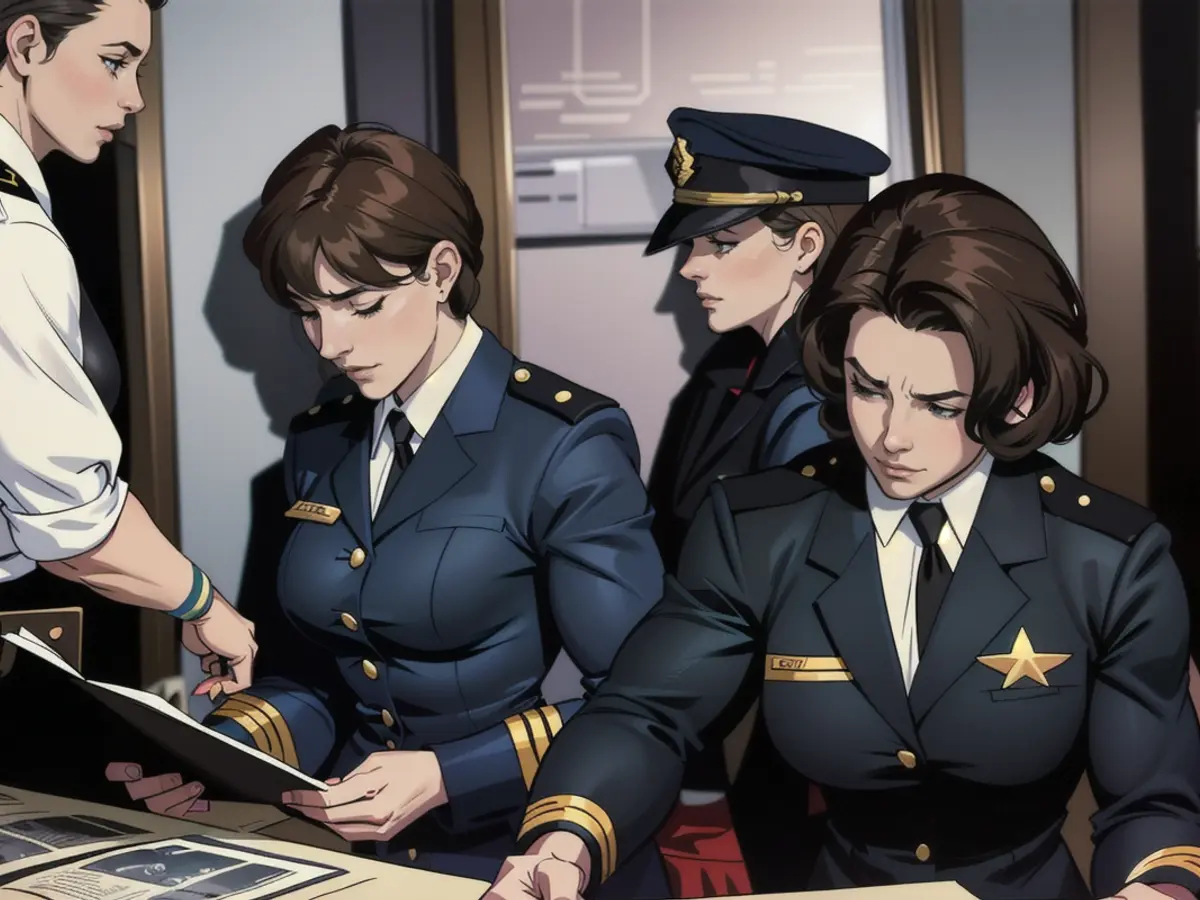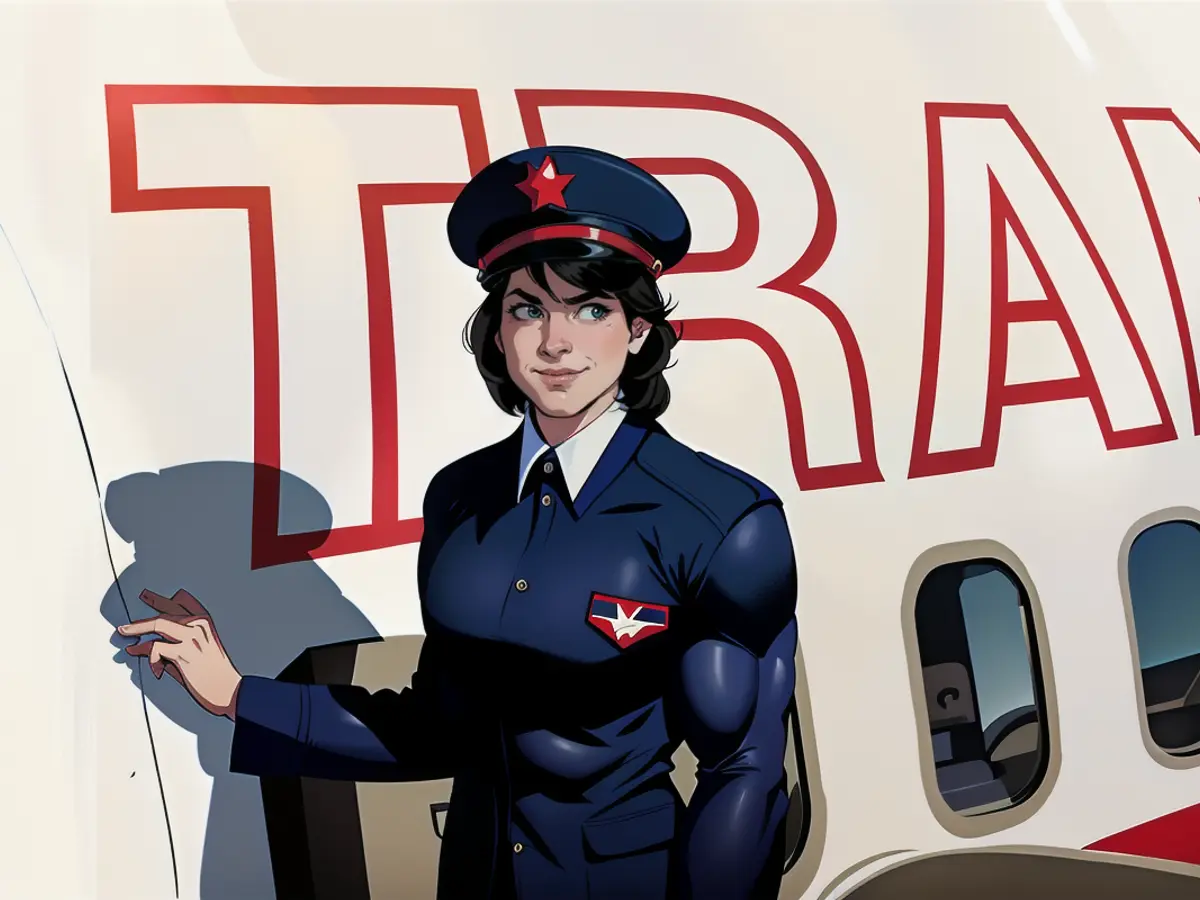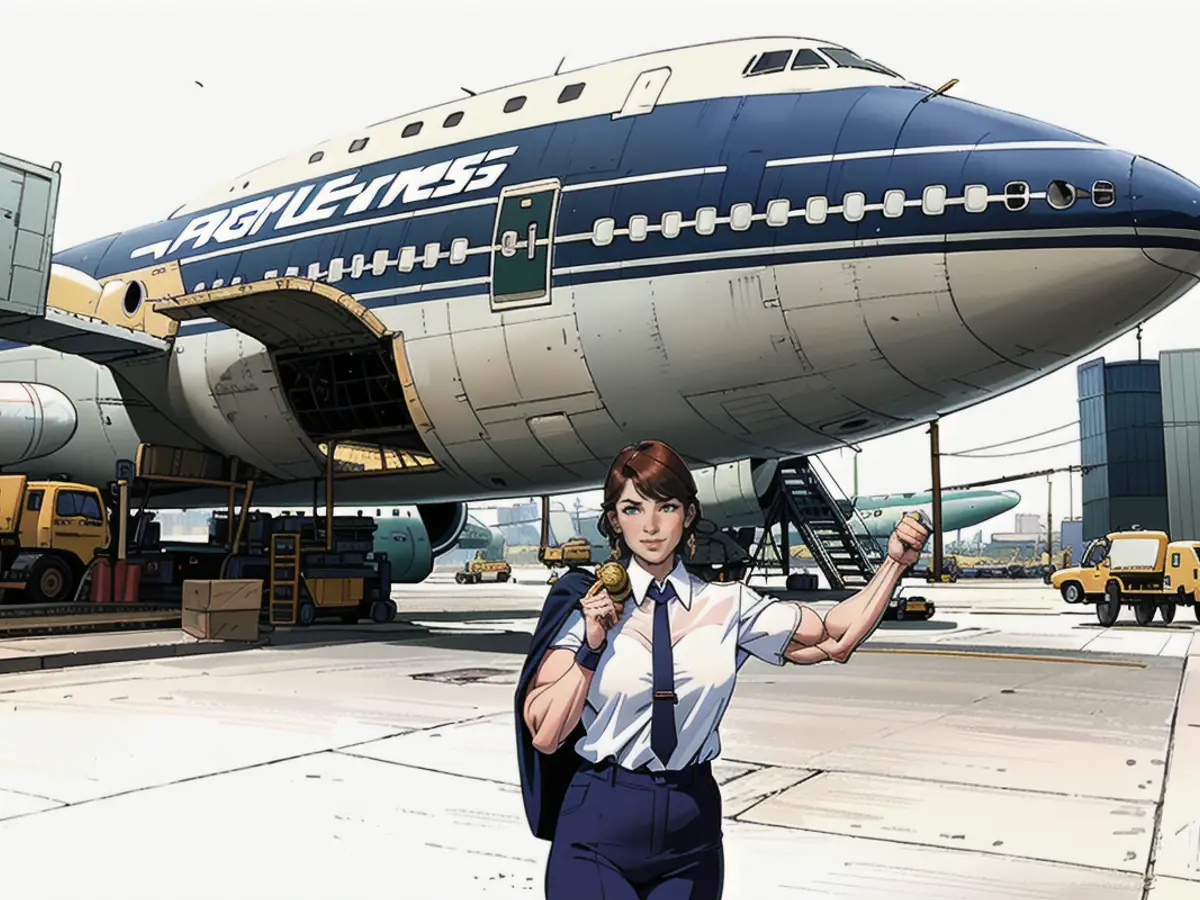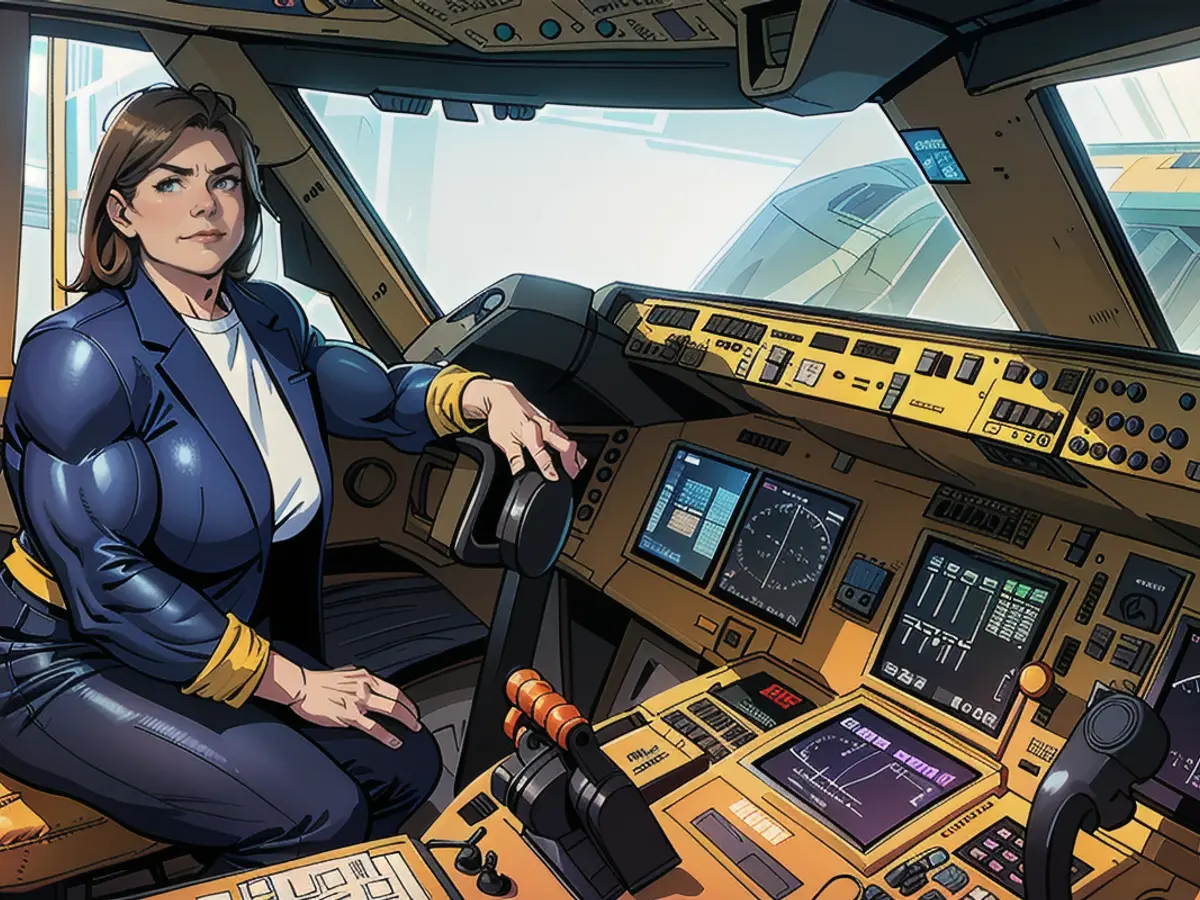A woman set a record in American flights, but this fact remained hidden for a long time.
In the 1950s, I lived on a farm where women flying planes or working as airline pilots was unheard of. Despite this, I developed an interest in aviation by watching the airplanes flying over our farm. To indulge my curiosity, I would imagine riding my horse to the top of a nearby limestone bluff, pretending it had wings and flying across the fields.
When I grew up, I decided to pursue my love for aviation by becoming a flight attendant for the well-known airline TWA in 1972. While I enjoyed the experience, I was more interested in the inner workings of these large planes than the job itself. The pilots and flight engineers were more approachable, so I would pepper them with questions about their jobs and the aircraft.
The flight crew consisted of two pilots and a flight engineer, making it easier for me to gather information. Additionally, the flight engineer was seated behind the pilots, providing better access for me to ask questions and learn about the switches, hydraulics, and engines.
During the summer, my passion for flying led me to start taking flying lessons in Vermont using a small Piper seaplane. I had never been so addicted to anything in my life. It was the closest I had felt to being in an airplane cockpit.
In 1975, I discovered that the first two female airline pilots in the United States, Bonnie Tiburzi at American Airlines and Emily Warner at Frontier, had been hired. This gave me the motivation I needed to pursue my dreams. I joined a career pilot program for flight engineers in Miami and got my first commercial license in 1976.
My first cockpit job came in 1977, working for a small commuter airline, Air Illinois, as the first officer on a Twin Otter - a small turboprop regional plane. Air Illinois already had a female captain, but the owner forbade us from flying together. I learned he made this decision because he thought a man was necessary in case of emergencies, and he also feared scaring passengers away. He could make these rules since he was the owner, and there were no laws against it at the time.
One day, I stepped in for the captain while her first officer was ill. The owner, unaware of my presence on the flight, screamed down the phone at the dispatcher, demanding that the cockpit door be closed and no announcements be made to keep the passengers unaware of the all-female crew. This was on December 30, 1977, and it was a historic moment, but it remained a secret.
After a while, Rippelmeyer stopped flying with the female captain due to her demanding schedule. Rippelmeyer had dual roles as a flight attendant and pilot resulting in a hectic timetable. She knew she couldn't continue in both roles and chose to focus on her goal of earning 1000 hours of gas-turbine flight time.
Unfortunately, the defunct Ozark Air Lines rejected her during the hiring process because she was 5'4" - considered too short to be a pilot. However, she found work as a flight engineer with TWA, flying on the Boeing 727. With two other female pilots in the airline, they got along well, but all of them were furloughed just a week before reaching probation and earning their doubled salaries.
Luckily, being furloughed allowed Rippelmeyer to explore other options. With enough experience under her belt, she could now apply for larger airlines. However, one major airline, Ozark Air Lines, rejected her, citing her height of 5'4" as a reason for not being hired.

But, she didn't let her short stature deter her from pursuing her passion. She found employment with TWA as a flight engineer, flying on the Boeing 727. TWA had two other female pilots on its staff, and they bonded well. In a bittersweet twist, all three females working for the airline were furloughed, just a week before reaching probation and doubling their salaries.
With her flying hours complete, Rippelmeyer could now apply to larger airlines. One of these, the now-defunct Ozark Air Lines, refused to hire her because she was only 5'4" tall.
Despite this setback, Rippelmeyer took a job as a flight engineer with TWA, working on Boeing 727s. Two other female pilots were on staff, and they formed a strong bond. Tragically, the three women found themselves furloughed just a week before achieving the coveted probation and doubling their salaries.
Unfortunately, Rippelmeyer's time with TWA was cut short due to financial constraints. Despite her prior experience and qualifications, airlines weren't comfortable hiring women to fly their planes. However, she never gave up on her dream, eventually becoming a commercial pilot.
Rippelmeyer discovered employment at a freight transporter named Seaboard World Airlines - functioning as co-pilot for the Boeing 747, taking off from JFK on cross-atlantic pathways.
"The circumstance was rather extraordinary," she elucidates, "as the majority of airlines initially welcomed you aboard as a flight engineer, exactly as I began at TWA. But at Seaboard, their professional engineers didn't possess a pilot certification and had no intention of acquiring one. Consequently, when you were employed as a pilot, you promptly sat in the first officer's chair."
The calendar year was 1980, and Rippelmeyer became the initial woman to traverse the 747 as a pilot. "I never imagined a lady could achieve that," she asserts, owing to the male pilots she'd collaborated with who contended it would be inappropriately challenging - both psychologically and physically.
"They convinced me there was a physical element to it. They informed me that on quad-engine aircraft, if two motors concurrently fritzed out on one side, no female could pressure the rudder adequate enough to retain the plane traveling straight."
However, Captain Carl Hirschberg, an accomplished helmsman who served as her superior and flight instructor, was eager to incorporate a female 747 pilot and declared she could. Moreover, he taught her how to do it.

"We were in a simulator once, and he proclaimed that we'd have an engine malfunction on takeoff. Merely, another contingency on the same side. That's not something an initial officer commonly performs. But, I had no option but to carry out the command. Swallowing my nerves, I returned, landed without the two motors, and my leg, from steadily astern the rudder, was quaking so feverishly that I was incapable of standing steady. Why would you do that to me? He replied, 'For I'm guaranteeing you're not winding up up there believing you incapable of achieving something you are proficient in, and you're thank you.' "
Breaking milestones
Alas, Rippelmeyer was furloughed again: "At age 30, I had lost my employment, was unmarried, unsupported, and determined my flight journey was not functioning out. I was pondering whether I'd misconstrued my existence."
However, the deregulation of airlines - which got rid of federal authority over passages and fees - created new ground for novices, ushering in an airline termed People Express, which operated from 1981 to 1987: "I began as an initial officer on the 737 and within a year, procured my captain's seat. I turned out to be one of the mummy first female aviators on the planet."
Later, People Express deployed the Boeing 747s and in 1984, Rippelmeyer became the first female to captain one on a transoceanic flight, from Newark to London Gatwick. "Stunning weather, pleasurable journey, delightful touchdown. I walked via the cabin and individuals were lauding me. There were photographers and journalists eagerly awaiting my arrival. The entire scenario was astonishing and beneficial."
Rippelmeyer piloted the Boeing 727 before People Express merged with Continental in 1987.
The vagueness that arose with the merger impelled her to use a sabbatical to traverse French Polynesia and ultimately portray herself in California to wed and nurture progeny. Postponing her career for approximately ten years, a divorce and a move to Texas, she restarted her aerial endeavors in 1998, successfully tapering family and working life.
"My two children and I shifted to Houston, where Continental had a base. I reverted to piloting domestically on the 737 to have the ability to reside more comfortably with my offspring. The lads were only three and seven. At first, I contemplated recruiting a live-in caretaker."
"However, there was this solitary voyage to Tegucigalpa, Honduras, that inspected at 9 a.m. and returned at 4 p.m. - so I could drop the youngsters off at school, trek to the airport, and return to gather them. It was a demanding approach into the airport, demanding further training. It's a visual-only descent upon a briefeld runway at a high altitude enclosed by mountains and has no electronic pathways. The chief pilot inquired as to why I yearned to navigate into the most hazardous airport we'd. I relayed it was since the school routine harmonized with this flight."

"Thus, I maneuvered this route for approximately twelve years whilst my children underwent age."
Rippelmeyer's trips to Tegucigalpa resulted in what she calls her "post-retirement job" - aiding the people of Roatan, an offshore Honduran island. After interacting with missionaries on her flights, she started transporting supplies provided by friends and relatives. Later, she established the non-profit ROSE (Roatan Support Effort) to facilitate clinics, schools, communal dining areas, sports activities, and an animal shelter.
Her last flight as a pilot occurred in 2013 on a Boeing 787 with United Airlines, a fusion of United Airlines and Continental Airlines.
"My first 747 journey was to London, and my final 787 journey was also to London," she declares. "It was an exceptional flight. The crew was incredible. The layover was amazing. The London weather was marvelous. And I thought, this is the pinnacle of flying – but for the first time, I'd rather be doing something else. My heart was in Honduras with the nonprofit. So, upon my return, I informed the chief pilot that I desired to retire."
Rippelmeyer, who has penned two memoirs, "Life Takes Wings" and "Life Takes Flight," reminisces about the 747 and never truly bonded with the more contemporary 787, which she labels a "flying computer" requiring a laptop to repair rather than a toolkit.
"It's electronic equipment conversing with other electronic equipment, and there's nothing wrong with that," she remarks. "It frequently operates. It's much lighter in weight and consumes less fuel, which is fantastic. I simply might not have flown her long enough to attach to her like I did with the 747."
She believes that women's careers in aviation have enhanced: "Nowadays, all ladies aspiring to be airline pilots can seize that chance. Aviation schools and airlines embrace female candidates as readily as males. I don't perceive any discrimination against women anymore."
"Perhaps if it continues to exist, it's owing to some outdated viewpoints that females should be at home with their children. But I believe this is progressively shifting."

Read also:
- Fear of escalation in the Middle East: US Secretary of State Blinken travels to the region again
- Government circles: US Secretary of State Blinken to travel to Middle East again
- Bridging days 2024: How you can double your vacation this year
- Germany has wanderlust: how tour operators and airlines are looking ahead to the next travel year
After learning about the first female airline pilots in the United States, I was inspired to pursue my own aviation career. Although I faced challenges due to my short stature, I remained determined and eventually became a commercial pilot.
Inspired by the achievements of early female aviators, I pushed through challenges and became a commercial pilot, overcoming concerns about my height.
Source: edition.cnn.com








